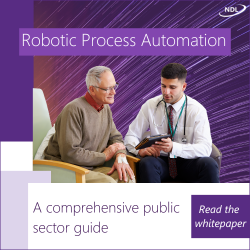Change in methodologies and GDS support has enabled the agency to complete eight projects in three years
A switch to agile methodologies has enabled the Driver and Vehicle Licensing Agency (DVLA) to speed up its implementation of digital transformation projects, according to one of its lead officials.
John Hewson, services manager of common services, told Capita’s Channel Shift Conference 2016 that the organisation has completed eight projects in three years compared with just two in the previous decade.
He traced the change in approach back to 2006, when the DVLA had completed major projects to make vehicle tax digital and move drive licences online. It succeeded in its aims but found itself short of resources to move forward.
“We had completed the really expensive big things and they had cost us an absolute fortune,” Hewson said. “We did them in an old style civil service way, with large projects, single suppliers on a waterfall basis.
“We had given them the project without speaking to the customer and they had gone away for two years, spent money hand over fist and said ‘Here’s the product for you’… and then we had to make expensive changes to it because it was a closed box where we only could go back to one supplier,” he said.
This left DVLA with a huge bill and no money for anything else aside from small improvements on its existing projects. It was particularly frustrating for the organisation as, despite having a digital front end, its core systems remained old.
Second revolution
“We wanted to do more but we had to find a new way of achieving that, and that’s when we came to what I call the second revolution,” said Hewson.
The Government Digital Service (GDS) had a big part to play in how DVLA would approach digital going forward. Hewson said there was resistance from some people in the agency, but the board bought into GDS’s ideas.
“Fortunately our board saw an opportunity and gave it a go…. It wasn’t just our board, the Department for Transport board also said that (GDS) was very influential and they would make our lives hell if we don’t at least try it and see what happens,” he explained.
One of DVLA’s suppliers said that a digital project would take two years and cost £26 million. GDS refused to give the department clearance for such a huge amount of money and said that the DVLA should try to start the project from scratch. It ended up taking nine months and cost only £6 million.
“We found that it was far better than what we would have got with the old method, and that triggered us to realise there was a better way. It was difficult to admit that for the past 10 years you have been trying to do it in a way that wasn’t as good as it could be, but from that point on there was very few people who would suggest going back to the old way,” Hewson said.
No more waterfall
One of the major elements of the change was that DVLA switched from its traditional waterfall methods of working to becoming more agile.
“For me, being agile means not taking three months to draw up your requirements for a project and then pass a document to someone and say ‘build that’, because what you get at the end probably won’t be what you expected,” he stated.
Under the previous approach, managers would not get what they had envisaged but find they had spent their allocated budget.
DVLA now work in short builds, seeing if ideas work before building on top of them. Hewson said that this allows the team to constantly how the process is panning out.
“We work in a two week sprint, where we ask developers to work on something for two weeks, and then we will have a look at it. if it’s not what we want, we tweak it a bit and make it something else instead,” Hewson explained.
Customer value
He emphasised that once organisations have built something which adds value to the customer – they should release it, rather than waiting until the whole end-to-end project is completed.
This way, customers can give ongoing feedback on what they like and dislike, and what new features they would like to see. This is a big part of the change at DVLA, as with the older digital projects, the organisation only asked the customers what they thought after the project had been signed off. Now it asks them before projects are signed off, as well as getting feedback throughout.
Agile working has enabled DVLA to complete eight digital projects in three years, including giving insurance companies access to driving records, the development of a fleet management portal and the ability to pay a penalty online. This compares favourably with the two digital projects in a decade.
Hewson acknowledged that the earlier ones were bigger in scale, but maintained that with the previous way of working, it would have been impossible for the organisation to do as much as it has in the same timeframe.
Picture from Pushcreativity, Creative Commons Attribution-Share Alike 3.0 through Wikimedia




